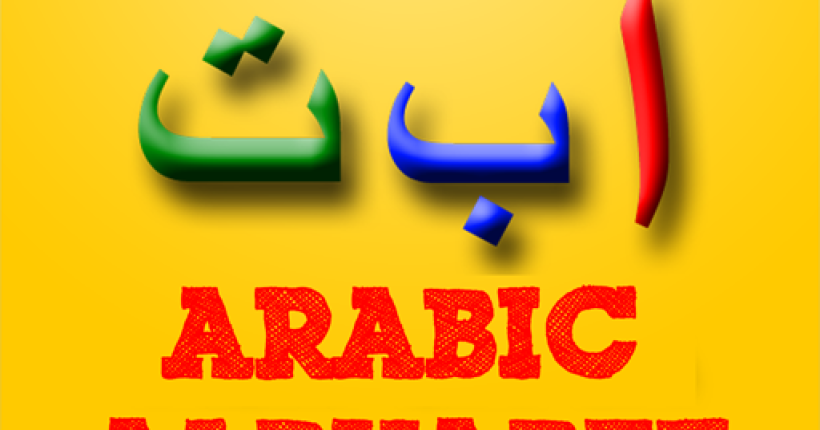Arabic Alphabet Basics is essential when you are beginning your journey with the Arabic language, that is one step that you cannot avoid. These alphabets form the building block of every word, sentence, and meaning in the Arabic language.
Why Learning Arabic Alphabet Basics Matters
Likewise, as it is essential to learn the ABCs for reading English, it is also important to learn the Arabic Alphabet Basics for fluency.
For students and learners, studying the Arabic alphabet is not memorizing shapes, learn to train your tongue and ears to recognize and say each sound.
Arabic has special letters that English or some other languages are not familiar with. Without knowledge of Arabic Alphabet Basics, it is simple to mispronounce words, and they will mean something entirely different.
Starting with a strong alphabet foundation also makes you more confident while reading the Quran, listening to native speakers, or writing in Arabic. It removes confusion and brings clarity to every part of your language learning process.
Keep in mind, all fluent speakers started out by learning the alphabet. So go slow, be patient, and start off on the right foot, with the Arabic Alphabet Basics as your rock-solid foundation.
Overview of the Arabic Alphabet
The Arabic Alphabet Basics consist of 28 letters. They are read right to left, which can feel odd at the beginning, but becomes second nature after a short practice.
Each letter has a unique shape and sound, and some letters adjust their shape according to where they appear in a word—at the beginning, middle, or end.
Unlike English, Arabic letters are always written in cursive, i.e., they are all linked to each other. This produces writing that is very beautiful, but also means that students need to be able to recognize different forms of the same letter.
For example, the letter “ب” (baa) looks slightly differently when it is at the start of a word than when it is at the end. Another important component of Arabic Alphabet Basics is the knowledge of short vowels, or Harakat.
These are tiny marks written above or below letters to indicate how a word should be read. Without them, many Arabic words appear identical, so learning them early enhances reading and pronunciation.
Arabic Alphabet Basics – Letters and Sounds
| Name (Transliteration) | Sound Equivalent in English | |
| أ | Alif | “aa” as in apple (glottal stop) |
| ب | Baa | “b” as in bat |
| ت | Taa | “t” as in top |
| ث | Thaa | “th” as in think |
| ج | Jeem | “j” as in jam (in many dialects) |
| ح | Haa | Strong “h” from the throat |
| خ | Khaa | Harsh “kh”, like Bach (German “ch”) |
| د | Daal | “d” as in dog |
| ذ | Dhaal | “th” as in this |
| ر | Raa | Rolled “r” |
| ز | Zay | “z” as in zoo |
| س | Seen | “s” as in sun |
| ش | Sheen | “sh” as in ship |
| ص | Saad | Heavy “s” (emphatic) |
| ض | Daad | Heavy “d” (unique to Arabic) |
| ط | Taa | Heavy “t” (emphatic) |
| ظ | Zaa | Heavy “z” or “th” (emphatic) |
| ع | ‘Ayn | Deep throat sound (no English equivalent) |
| غ | Ghayn | Gargled “gh”, like French “r” |
| ف | Faa | “f” as in fun |
| ق | Qaaf | Deep “k” from the throat |
| ك | Kaaf | “k” as in kite |
| ل | Laam | “l” as in lamp |
| م | Meem | “m” as in moon |
| ن | Noon | “n” as in net |
| هـ | Haa | Soft “h” as in hat |
| و | Waw | “w” as in wet or “oo” as in moon |
| ي | Yaa | “y” as in yes or “ee” as in see |
Start by practicing 3–5 letters a day. Use sound apps or join a course at Tareequl Jannah Academy to listen to native pronunciation and practice under guidance. Link each letter to an easy word to help remember.
Pronunciation Tips for Each Arabic Letter

Gaining familiarity with the sounds of the Arabic letters will take a little practice initially, especially since some of them do not even have equivalents in the English language.
But practice and proper technique will help you pronounce them correctly and confidently. This section will guide you through pronunciation tips that ease the Arabic Alphabet Basics.
Group 1: Familiar Sounds
These letters are easy for English speakers since they contain familiar sounds:
ب (Baa) – As in English “b” in boy.
ت (Taa) – As in “t” in top.
د (Daal) – As in “d” in dog.
ف (Faa) – As in “f” in fish.
ك (Kaaf) – As in “k” in kite.
م (Meem) – As in “m” in moon.
ن (Noon) – As in “n” in net.
Start with these letters to build confidence. Use flashcards and practice speaking following native speakers.
Group 2: Difficult but Manageable Sounds
These Arabic Alphabet Basics letters require practice but have close English equivalents:
ث (Thaa) – As in “th” in think.
ذ (Dhaal) – As in “th” in this.
ر (Raa) – Rolled “r”; attempt to vibrate your tongue slightly.
ش (Sheen) – As in “sh” in ship.
ز (Zay) – As in “z” in zebra.
و (Waw) – As in “w” in water or “oo” in moon.
ي (Yaa) – As in “y” in yes or “ee” in see.
Record yourself and compare with native speakers. Apps or classes at Tareequl Jannah Academy can assist in refining your pronunciation with live feedback.
Group 3: Special Arabic Sounds
These are the most difficult sounds in the Arabic Alphabet Basics, but also the most rewarding to master:
خ (Khaa) – A throat “kh” sound, similar to the Scottish “loch”.
ع (‘Ayn) – A sound not present in English. Start by closing your throat slightly.
غ (Ghayn) – The French “r” sound or a gargled “gh” sound.
ق (Qaaf) – Deep “k” sound from the back of the throat.
ص، ض، ط، ظ (Emphatic letters) – These letters are fuller, heavier versions of regular letters (like an intensified “s” or “d”).
Take time! Don’t rush. Imitating the sound repeatedly after listening to native speakers is the trick. At Tareequl Jannah Academy, fresh students are trained stage by stage to pronounce these letters in the correct manner without stress.
Practice Makes Perfect
Repeat the letters out loud daily.
Listen to native Arabic videos and repeat after the speaker.
Utilize audio aids and pronunciation apps.
Practice with a trained teacher to cut errors at their roots.
Don’t forget, perfect pronunciation is a matter of time. But with regular practice and correct guidance, you will develop quickly.
Tools and Techniques to Master Pronunciation

After mastering the Arabic Alphabet Basics, perfecting the pronunciation of each letter comes next. Arabic pronunciation is achievable with proper tools, regular practice, and an intelligent learning strategy.
Below are some proven and tested techniques for students and learners who want to speak confidently and clearly.
1. Listen and Repeat Daily
One of the easiest and best ways to improve your pronunciation is through listening to native speakers. Use audio material such as:
Arabic alphabet pronunciation YouTube videos
Language learning apps such as Quran Companion, Madinah Arabic, or Tajweed Coach
Tip: Say every letter 5–10 times a day, especially those more challenging to say like ع (‘Ayn) or غ (Ghayn).
2. Practice in a Mirror
Mind your lips when pronouncing Arabic Alphabet Basics letters. Arabic has sounds depending on how your tongue is positioned and the throat movement. Practicing before a mirror allows you to detect errors and adjust accordingly. Rehearse the following:
letters like ط (Taa) and ص (Saad), which require proper placement of the tongue.
3. Pronunciation Apps
There are some apps which can guide learners in improving the pronunciation of Arabic. Look for the following:
Native audio examples
Letter-by-letter pronunciation guides
Practice quizzes and games
Common Tools: Google Translate (audio function), Memrise Arabic Basics, Arabic Learning by TenguLogi.
4. Practice with Trained Teachers
Videos and apps are great, but nothing is as good as real-time correction. Enrolling in a course or program where a trained instructor can correct your pronunciation is a savior.
That is where Tareequl Jannah Academy excels. Their structured lessons walk you through the Arabic Alphabet Basics and proper pronunciation step by step.
Whether you’re new to Arabic or just need a refresher on your skills, learning from the instruction of a teacher means that you’re getting each letter right from day one.
5. Record Yourself
Use your computer or phone to practice reading out letters or basic words of Arabic. Compare with native speakers and listen back.
Why it works: You’ll learn minuscule errors you’d never catch in real time and can track your improvement over weeks.
Common Mistakes and How to Avoid Them

When beginning with the Arabic Alphabet Basics, it’s normal to get a few things wrong. The secret is not to fear them, but to notice, fix, and learn from them. Here are some of the most frequent pronunciation errors learners commit, and useful tips to steer clear of them.
1. Mixing Up Letters That Look Similar
Certain Arabic letters appear almost identical but have very different sounds. For instance:
ب (Baa) vs. ت (Taa) vs. ث (Thaa)
د (Daal) vs. ذ (Dhaal)
ص (Saad) vs. ض (Daad)
How to Avoid It:
Practice each letter slowly in isolation with its sound. Flashcards and repetition exercises are effective.
2. Neglecting Emphatic Letters
Arabic Alphabet Basics has a few emphatic letters—like ص (Saad), ض (Daad), ط (Taa), ظ (Zaa)—which must be pronounced with an extra deeper fuller tone. They tend to be confused by most learners with their non-emphatic counterparts, with a bearing on clarity and meaning.
How to Avoid It:
Practice these letters in isolation first, then in words. Focus on making the sound from deeper in your mouth. A qualified tutor can give live feedback to help correct this, which is exactly what you’ll get in Tareequl Jannah Academy’s beginner courses.
3. Over-Relying on English Sounds
It’s human nature to try to map all Arabic letters to English ones, but a few Arabic Alphabet Basics letters, like ع (‘Ayn), غ (Ghayn), and ق (Qaaf), do not even exist in the English language.
How to Avoid It:
Forgetting comparisons, exercise your ear by listening to native speakers. Imitate their pronunciation. Repetition apps and record your voice to catch yourself up.
4. Leaving out Harakat (Vowel Marks)
Rookies usually skip vowel marks (Harakat) upon reading. Yet, in Arabic Alphabet Basics, such small markings play an indispensable role in proper pronunciation.
Preventing It:
Use totally vocalized materials (like novice Quran readers). Read every letter together with all of its different vowel sounds. Tareequl Jannah Academy practices vowel exercise right from the start to instill fluency and accuracy.
5. Not Practicing Out Loud
Others simply read or listen in silence, leading to bad pronunciation. Arabic needs to be heard aloud in order to learn the sounds.
How to Prevent It:
Read out loud every day, even the alphabet! Practice in front of a mirror or instructor. Use speaking drills during live sessions, which are included in the interactive approach at Tareequl Jannah Academy.
Conclusion
Learning the Arabic Alphabet Basics is the first and most fundamental step in your learning Arabic. Through constant practice, accurate methods of pronunciation, and the facilitation of experienced teachers, you can speak effectively in Arabic confidently and clearly.


